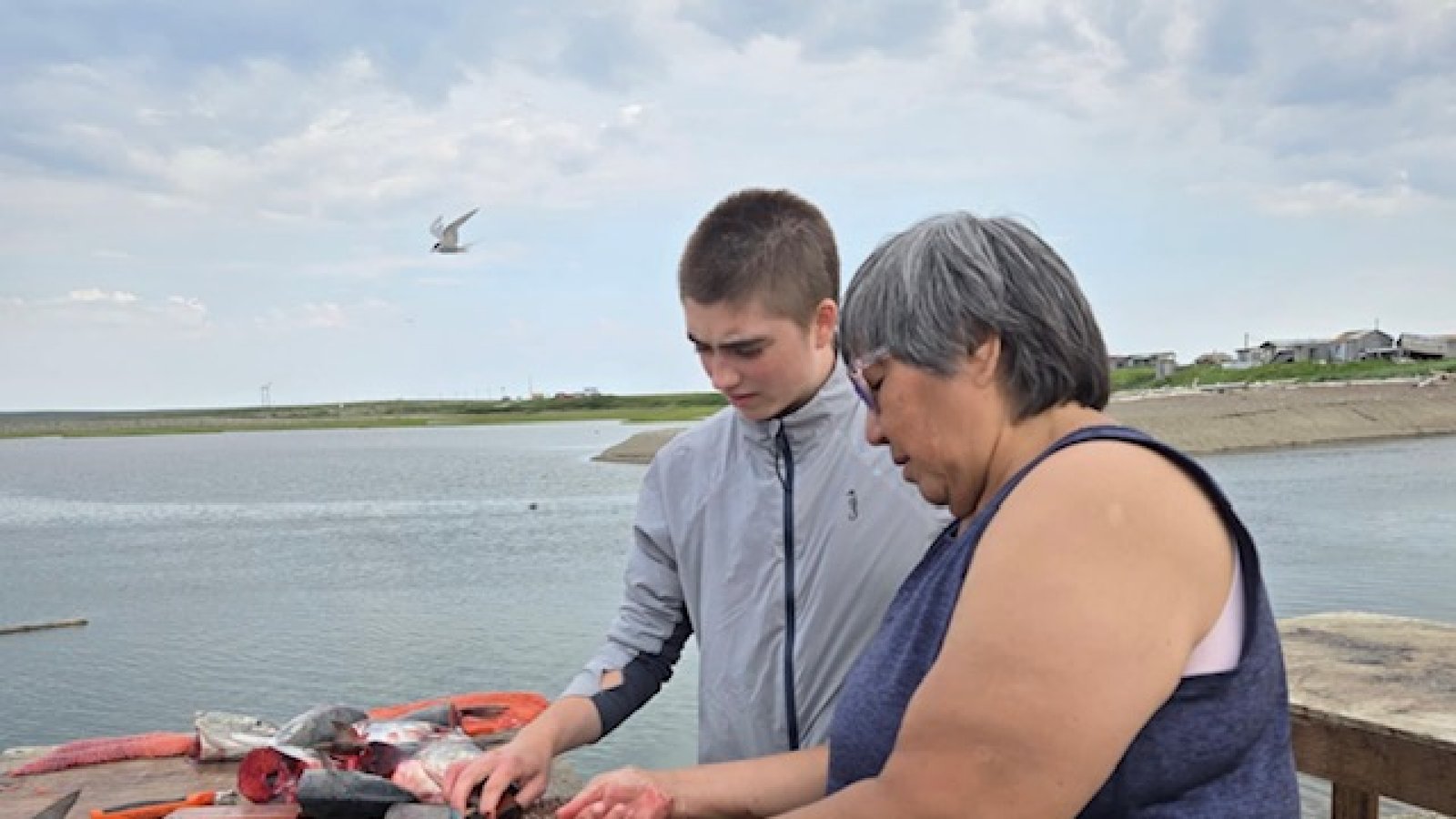When in Nome we had time to roam… 15 days to be exact.
Our last watch before arriving in Nome was one of the most memorable. Mike and I were on watch from 10 to 2, scanning the water carefully for the countless logs that drifted ahead of us. Dodging them required more focus as the wind shifted and ripples began to play tricks on our eyes. Still, we made it through unscathed.
At one point, we passed a stick shaped like a wishbone. This made me smile — a little sign of good luck. During that same watch, Mike finally beat the game of impossible solitaire. Of all our watches together, I think it was the first time either of us had won… I almost didn't believe him. We watched as the sun slowly transformed into a glowing orange orb, only skimming the horizon before beginning its climb upward. The blue sky transitioned into a vast canvas lit up by salmon-pink hues — and it was midnight.
Wide awake, we snapped pictures, trying to capture the beauty that only our eyes could truly see. Suddenly, it was 2 a.m and our watch was over. I headed to bed while Mike stayed up, too captivated by the sky to sleep.
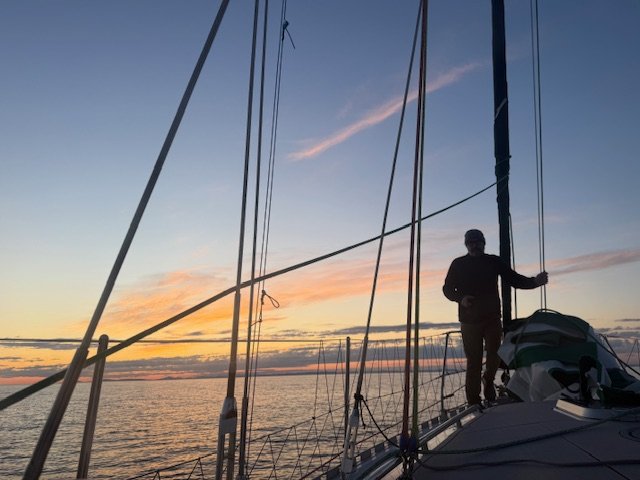
At 5 a.m. on July 3rd, we arrived in Nome. The bow thruster and sound of commotion jolted me out of bed — we made it. As the only sailboat in a harbor full of gold dredgers, it's safe to say we stood out.
Nome gave us a warm welcome. It was sunny and in the 70s when we arrived — and stayed that way for most of our visit. We soaked up the warmth as we waited for the ice to melt up north. Nome became a place to rest, focus on our project, explore, and connect with the community. There’s so much good I could report from Nome, but I’ll share just a few highlights.
One of the many people who greeted us with kindness and made the stay in Nome so memorable was Meghann. After our five-day crossing from Dutch Harbor — with skies that never went dark — my sleep schedule was completely out of sync. One night, unable to fall asleep, I went for a walk across the street to the wetlands. It was still and plovers sang as they did loops around me.
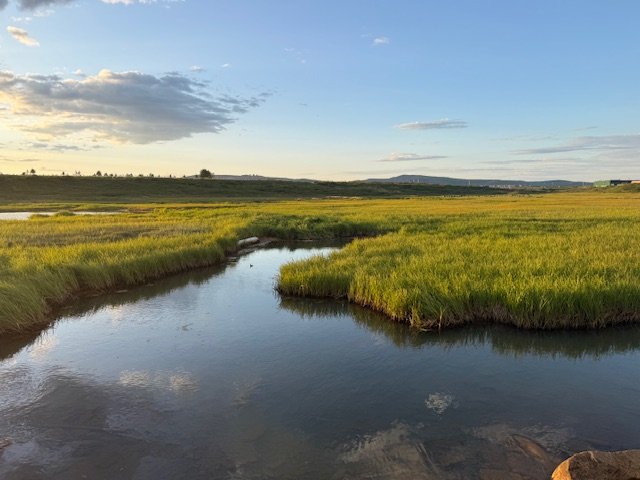
Across the street, a woman passed by. We waved, exchanged greetings, and suddenly found ourselves deep in conversation, sharing snapshots of our lives. Meghann, a local, has a large family local to Nome and works up the road from the harbor. When I asked where she was headed, she exclaimed, “Live music!” — which I could faintly hear just up the street.
“Can I come?!” I asked excitedly. I love to dance.
And dance I did. I can now confirm- Nome locals know how to get down.
The next day, our crew’s "adventure time" included a beach outing with three pie pans used to pan for gold. We all took turns, sifting through shiny sediment and smooth pebbles — we quickly learned that we better stick to sailing. We swam in Norton Sound and I was captivated by perfect skipping rocks scattered along the shore. I built a pile and watched them leap across the Sound. At one point, birds swarmed overhead, tricked by the splashes that resembled fish jumping. It was a surreal moment. I finally quit when I figured my arm might dislocate if I threw one more.
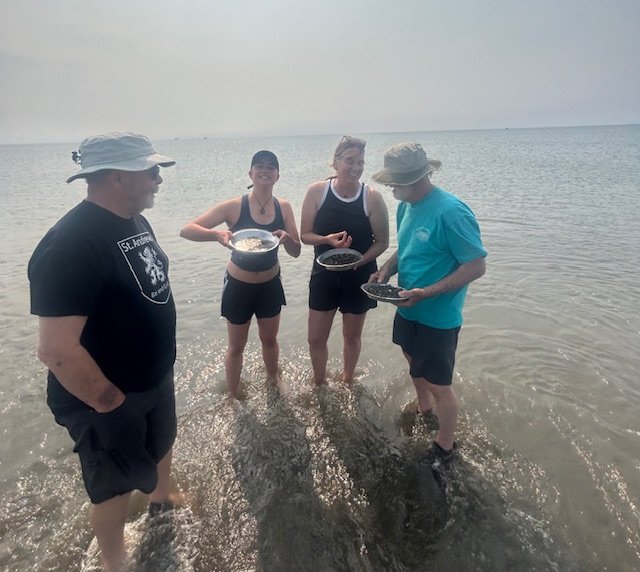
As I made my way back to the crew, an ATV tore down the beach and skidded to a stop in front of me.
“Meghann!”
Soon, I was tightly gripping the back of her ATV and we were off to the mouth. The mouth is where Nome River meets Norton Sound. There, Meghann and I joined her parents, Annette and Kooper, to fillet and dry pilgrim red salmon — a common preservation method among native Alaskans, especially the Inuiat people. The warm, sunny day was perfect for drying fish.
I asked how I could help and was handed the task of washing the fish before hanging them on the drying rack. Eventually, Annette let me try cutting one. I was thrilled — and quickly humbled. They made it look easy.
Annette handed me an ulu, a traditional Inuit and Yupik knife with a broad, semicircular blade. It was immediately clear that I had never used one before. She adjusted my grip and outlined where to cut. Cutting the fish requires precision to optimize drying- an art I have yet to perfect. It took some time, but I managed to slice one decent enough to dry alongside the others.
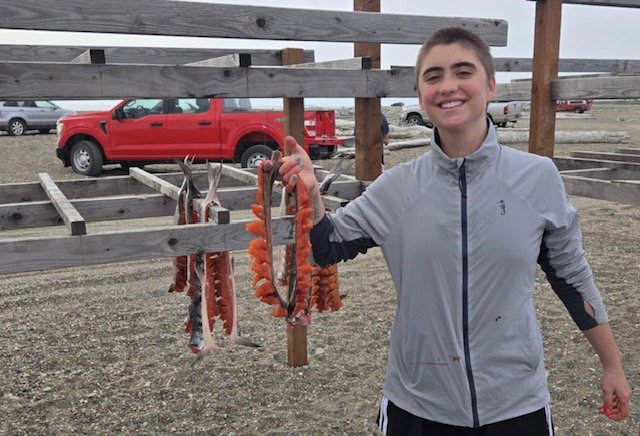
The kindness and patience that Annette and Kooper displayed made them incredible teachers- not to mention Kooper was the fish filleting champion. He came in first in a competition but forgot to stand up when he was done. So, technically he came in second, but I still consider him the winner. I’m honored to have learned from the best.
Thank you, Meghann, Annette, Kooper, and all of our neighbors who became friends in Nome.
— Tess

